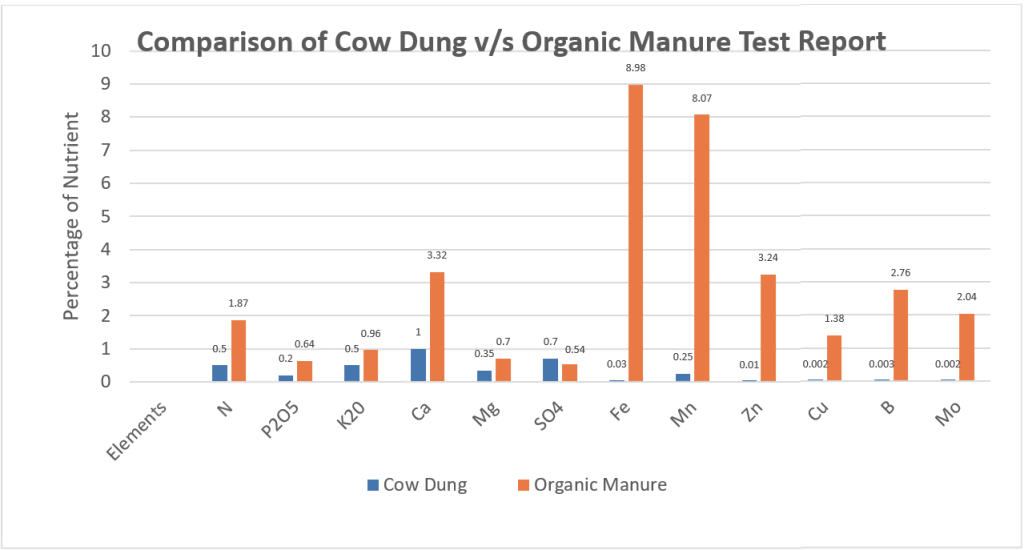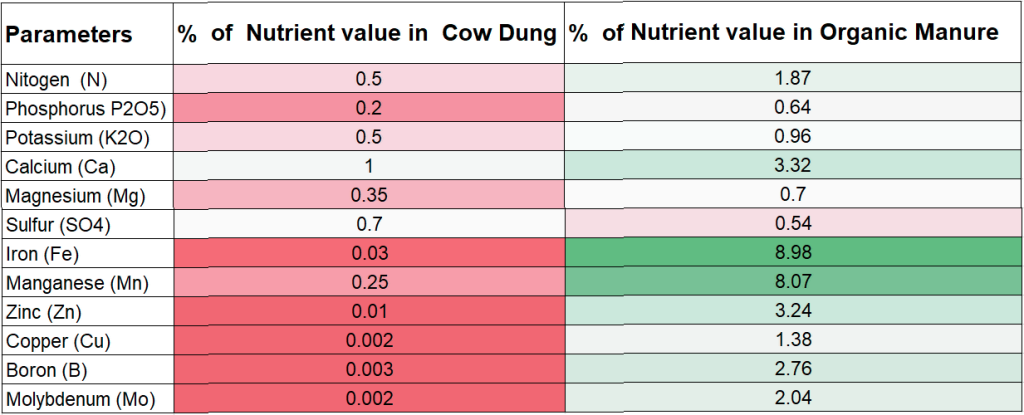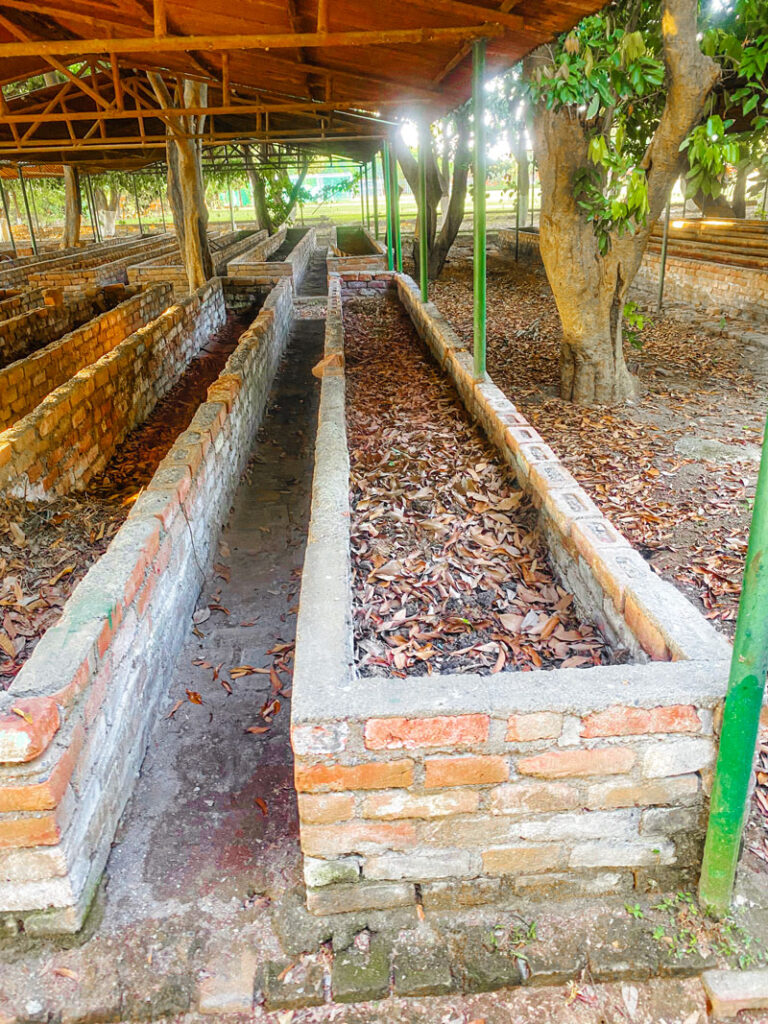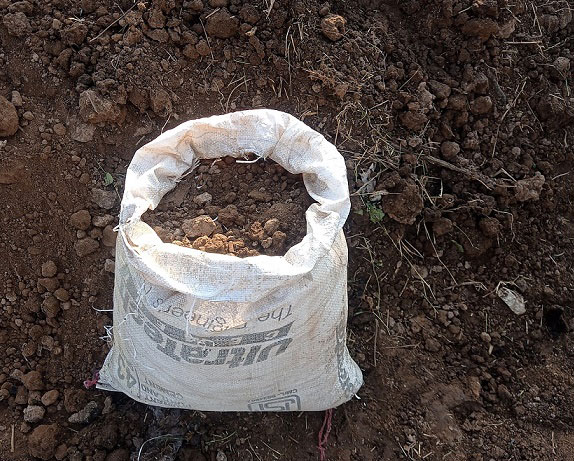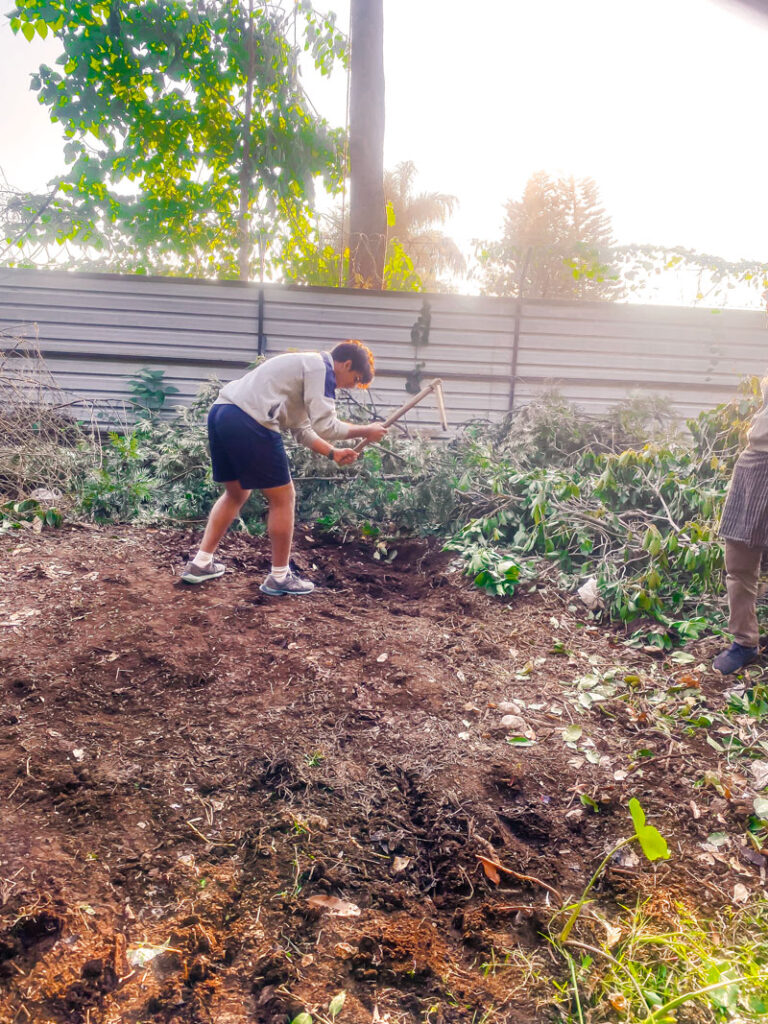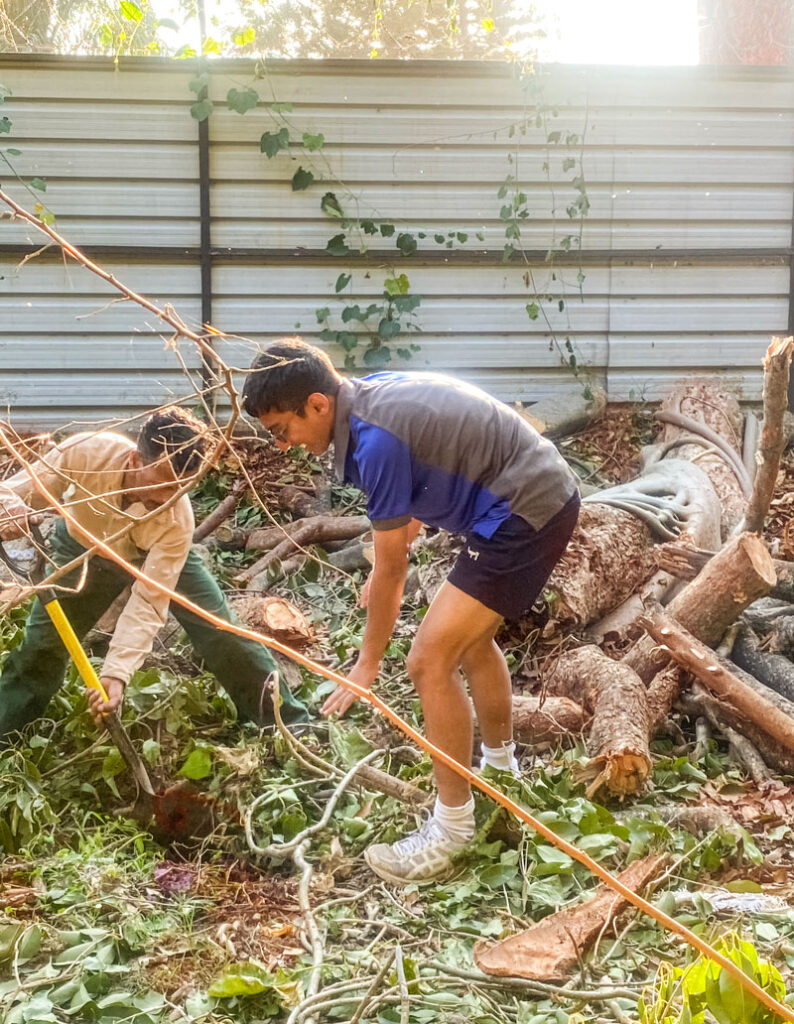Composte Pit
Once back, I led the transformation of an overlooked area into three sizable composting pits, each with a capacity of 125 m3. Due to the smell of decaying, the pits were dug along the boundary wall of the school, 50 meter away from the closest house.
The composting process was very straightforward. We layered wet waste – food waste, vegetable peels, leftover food, kitchen waste, etc – with dry waste – dead leaves, cut grass, and other garden waste. The layering of the dry waste was easy because the school has 72 Acres of land, covered with greenery. So, the dry waste being generated was ample, and the kitchen waste from the Mess, as I mentioned earlier, was also easily available.The dry waste consisted of other kinds of waste as well, these include:

After the layering, we covered it with soil. The pit needed to be sealed securely for 2-3 months. This was done to prevent water entry and ensure efficient composting.
Despite the challenges of water seepage during the monsoons in 2022, the initiative succeeded, albeit a little delayed. Since then, we have had 5 cycles of composting in these pits.
The quality of the produced manure revitalized our school garden, reducing our reliance on external fertilizers and cutting costs. Beyond tangible benefits, my work inspired fellow students to implement similar practices at home.
The quality of this compost compared to cow dung, the most commonly used compost in my school and in India, can be seen below: –
